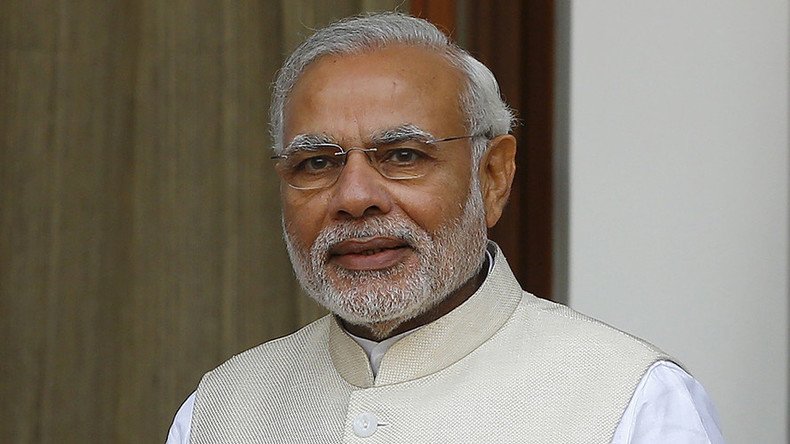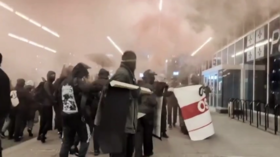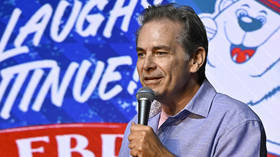India’s Modi comes to Russia - with love

Indian Prime Minister Narendra Modi’s first state visit to Russia on December 23-24 promises to unlock new vistas of cooperation for energizing an age-old strategic partnership at a time when both nations need each other more than ever.
Although annual Russia-India summits were institutionalized long ago and this is the sixteenth edition, the assertive push being given by Modi and President Vladimir Putin to re-script ties by breaking fresh ground makes this week’s dialogue special.
Redressing imbalances and shortcomings
The main lacuna currently holding back the full potential of the Russia-India relationship is an underwhelming performance in the economic sphere, which has lagged despite political will and pledges in both Moscow and New Delhi to ramp them up.
PM @narendramodi leaves for Russia. #ModiInRussiapic.twitter.com/1uCt1ZG3pm
— India in Russia (@IndEmbMoscow) December 23, 2015With bilateral trade stuck at a meager $10 billion per annum and two-way cumulative foreign investment flows lingering at just $12 billion, neither side can afford to allow the business-to-business links to drift to such a point that there is no longer a deeper beneficial exchange between two societies that had historically been closely knit.
In the contemporary period of economic interdependence and maximization of profit-making via diplomacy, the Russia-India affair is top-heavy with robust military-to-military deals among state elites but shaky at the bottom where civilian commerce is not booming.
Conscious of the need to broad-base the glue that holds these two all-weather friends together, Modi has mobilized a galaxy of Indian industry stalwarts to accompany him and attend the India-Russia CEO Summit. The high-profile makeup of the Indian business delegation in Moscow sends a message that Modi recognizes the true economic worth of Russia despite the fact that it is passing through a difficult downturn amidst plunging oil and gas prices. It should also help clear mutual misconceptions about inhospitable conditions for doing business in both countries.
Wooing Russian investors and entrepreneurs
For all the portrayals of Russia as struggling under the weight of Western sanctions, Modi senses a major opening in attracting Russian investors to India’s National Infrastructure Fund. Russia is flush with big-pocketed billionaires who are not facing a welcoming environment in their traditional European financial havens due to Putin’s resistance to Western geopolitical agendas.
With Putin’s facilitation, Modi would like to tap into these vast reservoirs of financing for the ‘Make in India’ campaign— an ambitious plan to build a strong indigenous manufacturing base which can generate employment and export revenues.
Even though Western stereotyping has painted Russia as technologically backward, it boasts of advanced aerospace, nanotechnology, metallurgy, optics and software sectors that Modi is aiming to connect with India’s economic growth story by setting up a $3 billion joint innovation fund.
But the enterprising genius of Russian youth, who have taken to start-ups in information technology, is close to Modi’s own ‘Startup India’ blueprint, and therefore he would want to forge conversations between the two for a nice opportunity at cross-learning.
Western sanctions: India’s opening
Owing to the retaliatory trade embargoes between the European Union and Russia, India is poised to step in and meet Russia’s demand for dairy products, seafood etc. The Russian Deputy Prime Minister Dmitry Rogozin sees Indian manufacturers as “a big partner that can fill the vacuum” caused by Russia’s standoff with the West and its allies like Turkey. Modi is alert to this dynamic and is pressing on all cylinders for a commercial liftoff that has sadly evaded Russia and India.
This process will also be boosted by China’s own economic slowdown, which signals that Russia cannot place all its eggs in Beijing’s basket to lift its chestnuts out of the fire. As a faster growing country than China, which does not pose any strategic threat whatsoever to Russia, India could be Russia’s white knight.
The reverse also holds true in the context of the quest for civilian nuclear energy in India, which rests very much on upgraded Russian assistance. Russia has faithfully stood by India no matter how hesitant and slow Western atomic energy companies have become about civilian nuclear commerce.
During the latest summit, Modi and Putin will be signing agreements for two new Russian-backed nuclear plants in the southern Indian state of Andhra Pradesh in accord with the localization norms of the ‘Make in India’ program.
Next generation defense cooperation
Modi is visiting Moscow after wrapping up a series of big-ticket agreements for new defense sector collaboration, including Russia’s state-of-the-art S-400 anti-aircraft missile system worth $4.5 billion.
India may purchase Russia’s newest S-400 air defense systems – report https://t.co/gn1fXF5MHwpic.twitter.com/rKK8zPJcEQ
— RT (@RT_com) December 20, 2015Military purchases have been the mainstays of the bilateral relationship, but India has diversified its suppliers and made its market more competitive for foreign bidders. To regain its share of the Indian defense pie, Russia has gone farthest in co-production and transfer of know-how.
In the words of the Russian Ambassador to India, Alexander Kadakin, “no country in the world shares with India the most secret and confidential things that it possesses.” Hence the noteworthy decision by Russia to jointly manufacture 200 light helicopters with local Indian partners for deployment with the Indian military, and eventually the Russian armed forces and possibly other buyers.
The model of the world’s fastest Brahmos supersonic cruise missile— offspring of the marriage of Indian and Russian defense companies— which is being sought by Southeast Asian and Latin American countries, reveals that the Russia-India bilateral synergy can deliver world-class results.
If the two countries also move forward in implementing a joint venture to build a fifth generation stealth fighter aircraft, it would set benchmarks and reify Modi’s vision of the defense industry attaining a central place in the ‘Make in India’ initiative.
The remark by Modi’s industrialization czar, Amitabh Kant, that “whatever we do with Russia will have a 'Make-in-India' component,” and Russia’s readiness to play ball for both pecuniary and strategic reasons, mean that the future of the Russia-India partnership is bright.
Reviving people-to-people ties
When Modi met Putin in Ufa earlier in 2015, he expressed admiration and pride at the manner in which the Russian people took to celebrating his trademark International Yoga Day. Modi is keen to see many more centers of Yoga emerge in Russia and help the Russian people rediscover India’s ancient wisdom. His government is also enthused by the scholarship of Russian Indologists, whose translations of Indian epics into Russian enhances India’s soft power.
What has been missing, though, is more intense cultural diplomacy by Russia in Indian society. The exposure of Indian people to Russian movies, art, music, ballet and literature has declined since the heydays of the Soviet Union. It must be revived to rekindle the soft spot that older Indians always had for all things Russian, and which has faded now with the younger generation.
Affirming Putin’s value
For a leader pigeonholed as ‘pro-American’ by those who have misread his core ‘India first’ nationalism, Modi appreciates Putin as an indispensable problem-solver for countering extremism and working to end armed conflicts in Syria and Ukraine. He sees no reason to buy into the ‘ostracize Putin’ motto of the West and is preparing to sign an extensive counter-terrorism pact in Moscow, living up to Rogozin’s billing of our two countries as the “vanguard of the struggle” against Islamist fundamentalism.
To India, Putin is a trustworthy and influential figure who holds the cards to a more stable and peaceful world. Modi’s praise of Putin’s “substantial views and a very clear and frank position as a permanent member of the UN Security Council” leaves no ambiguity that wherever Indian and Russian interests converge, they will work in tandem in pursuit of the shared vision of a multipolar international order.
Putin’s proactive role as a kingmaker and deal-broker in global crises has already neutralized Western designs of isolating Russia. In Moscow this week, Modi is reconfirming that Russia is indeed “our country’s greatest friend” and reminding the international community that Putin is too important to be spurned.
The statements, views and opinions expressed in this column are solely those of the author and do not necessarily represent those of RT.












